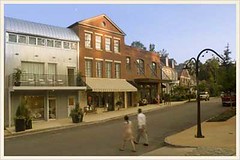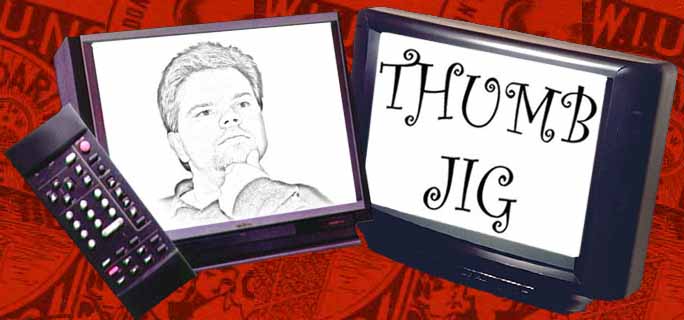 Open Source Movement: Typically referring to software, the online open source movement has brought us such gargantuan successes as Linux, Firefox, Gimp, Audacity and much more. In fact, open source software has achieved such a level of popularity that most programs offered by for-profit companies can be substituted with free (often improved) open source versions of the same applications. As impressive as open source software is on its own, it has been suggested that the concept can be extended to other features of society. Government policy can be shaped directly, allowing citizens to introduce and vote on legislation, teachers can share on an international level what has been effective in their profession and fashion curriculum accordingly, journalists and ordinary citizens can share information both nationally and locally while keeping each other honest, and copyrights and patents could be freed letting people improve and manufacture products of every sort in their own communities. This open source mentality has kept the scientific community active and would promote a thriving, nimble culture.
Open Source Movement: Typically referring to software, the online open source movement has brought us such gargantuan successes as Linux, Firefox, Gimp, Audacity and much more. In fact, open source software has achieved such a level of popularity that most programs offered by for-profit companies can be substituted with free (often improved) open source versions of the same applications. As impressive as open source software is on its own, it has been suggested that the concept can be extended to other features of society. Government policy can be shaped directly, allowing citizens to introduce and vote on legislation, teachers can share on an international level what has been effective in their profession and fashion curriculum accordingly, journalists and ordinary citizens can share information both nationally and locally while keeping each other honest, and copyrights and patents could be freed letting people improve and manufacture products of every sort in their own communities. This open source mentality has kept the scientific community active and would promote a thriving, nimble culture.Resources:
List of Open Source Software
The Open Source Movement
The Free Software Story
 Microfinancing: The problem with the old way of supporting the third world is that money was used to buy supplies for the poor without promoting survival skills. Microfinancing relies on the “teach a man to fish” principle where donors give money, usually as little as $25, to entrepreneurs in developing countries through a proxy such as Kiva. People from these countries raise grants through this program, start local businesses such as grocery stores, repair shops and construction companies, and are then given an opportunity to generate enough money to pay back their loans. As proof of the effectiveness of this credit system the rate of repayment had just dropped from 100% to 99% only because of internal political conflicts preventing some business owners from paying back their loans. Anyone who says “if it’s too good to be true then it probably is” hasn’t heard of Microfinancing.
Microfinancing: The problem with the old way of supporting the third world is that money was used to buy supplies for the poor without promoting survival skills. Microfinancing relies on the “teach a man to fish” principle where donors give money, usually as little as $25, to entrepreneurs in developing countries through a proxy such as Kiva. People from these countries raise grants through this program, start local businesses such as grocery stores, repair shops and construction companies, and are then given an opportunity to generate enough money to pay back their loans. As proof of the effectiveness of this credit system the rate of repayment had just dropped from 100% to 99% only because of internal political conflicts preventing some business owners from paying back their loans. Anyone who says “if it’s too good to be true then it probably is” hasn’t heard of Microfinancing.Resources:
Kiva
Here On Earth: Gumball Capital
 Biomimicry: When it comes down to it Biomimicry steals from Mother Nature’s design and imitates her for a more sustainable society. For example, in nature structures like coral reefs commonly assemble themselves. If we could find a way to duplicate this design technique we could take the components of a solar panel and coat our rooftops with it, allowing these pieces to self-assemble. Janine Benyus is one of the most visible and articulate spokespeople of the movement. According to her, nature accomplishes everything with only a small portion of the periodic table while human beings utilize the entire chart, including toxic chemicals. The trick is to see how we can narrow the kinds of chemicals we use to just those friendly to life. Boat manufacturers can replicate the design of a shark’s skin to clean the bottom of boats and give them better maneuverability and auto manufacturers can use a locust’s internal sensor to prevent collisions. The earth has had hundreds of millions of years to find solutions to some of the most daunting challenges of our age while humanity is only a flash in the pan. Biomimicry is just another humble reminder that nature is the ultimate engineer.
Biomimicry: When it comes down to it Biomimicry steals from Mother Nature’s design and imitates her for a more sustainable society. For example, in nature structures like coral reefs commonly assemble themselves. If we could find a way to duplicate this design technique we could take the components of a solar panel and coat our rooftops with it, allowing these pieces to self-assemble. Janine Benyus is one of the most visible and articulate spokespeople of the movement. According to her, nature accomplishes everything with only a small portion of the periodic table while human beings utilize the entire chart, including toxic chemicals. The trick is to see how we can narrow the kinds of chemicals we use to just those friendly to life. Boat manufacturers can replicate the design of a shark’s skin to clean the bottom of boats and give them better maneuverability and auto manufacturers can use a locust’s internal sensor to prevent collisions. The earth has had hundreds of millions of years to find solutions to some of the most daunting challenges of our age while humanity is only a flash in the pan. Biomimicry is just another humble reminder that nature is the ultimate engineer.Resources:
Janine Benyus: 12 sustainable design ideas from nature (video)
Biomimcry: Nature as Model, Measure and Mentor
Biomimicry Institute
 Sustainable Communities: The power of a small cluster of people determined to change the world should never be undervalued, and sustainable communities are the expression of just that -- people who want to reduce their harmful impact on their environment, devising ways to live happily with each other and the earth. Sustainable communities often maintain large gardens which provide for all of its residents so importing fruits and vegetables from large agribusinesses is needless. The commercial district only includes small, locally owned businesses and many people are encouraged to telecommute or work at home. Buildings are powered by solar energy, driving is discouraged, and sewage and rain water are recycled into fertilizer and irrigation respectively. Residents practice cohousing where each member of the community owns a house but also share a “common house” with their neighbors. Here tools and supplies are stored, meals can be cooked and social interaction occurs. These villages already exist (over 400 worldwide) in areas as diverse as Georgia, California and New Zealand. Some of them, like the one in New Zealand, have their own currency. Clean, friendly and environmentally responsible, hopefully it won’t be long before this idea catches fire.
Sustainable Communities: The power of a small cluster of people determined to change the world should never be undervalued, and sustainable communities are the expression of just that -- people who want to reduce their harmful impact on their environment, devising ways to live happily with each other and the earth. Sustainable communities often maintain large gardens which provide for all of its residents so importing fruits and vegetables from large agribusinesses is needless. The commercial district only includes small, locally owned businesses and many people are encouraged to telecommute or work at home. Buildings are powered by solar energy, driving is discouraged, and sewage and rain water are recycled into fertilizer and irrigation respectively. Residents practice cohousing where each member of the community owns a house but also share a “common house” with their neighbors. Here tools and supplies are stored, meals can be cooked and social interaction occurs. These villages already exist (over 400 worldwide) in areas as diverse as Georgia, California and New Zealand. Some of them, like the one in New Zealand, have their own currency. Clean, friendly and environmentally responsible, hopefully it won’t be long before this idea catches fire.Resources:
How Stuff Works: “How Sustainable Communities Work”
Serenbe
Earthsong Eco-Neighborhood


1 comment:
Hi, definitely agree. Those who want to get a view from within cohousing, please watch the documentary "Voices of Cohousing. Rebuilding villages in the city", award winner at the 34th Ekotopfilm festival 2007 and nominated at 9th Gold Panda Awards. For trailer and info: http://notsocrazy.net. Enjoy!
Post a Comment